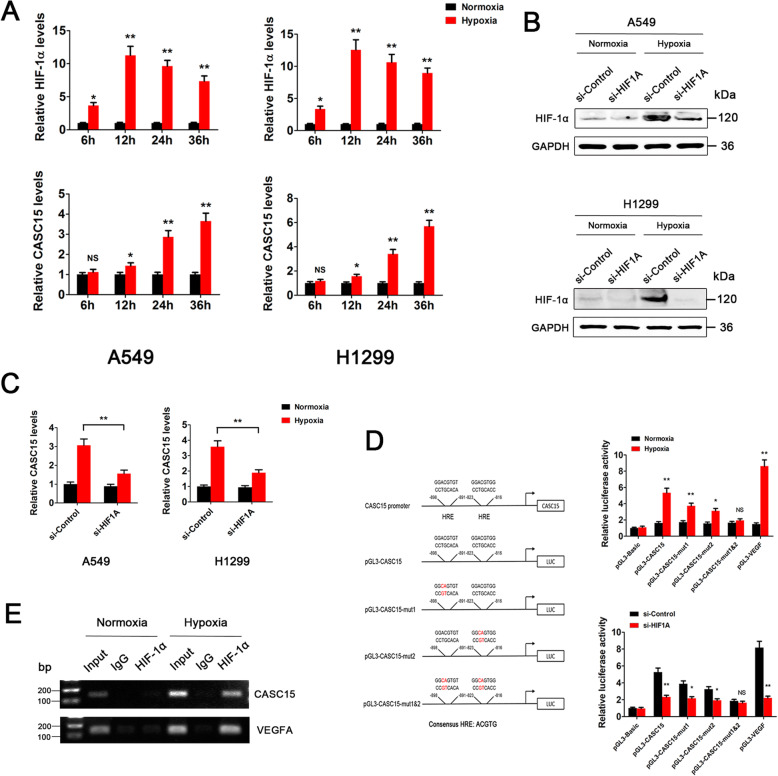Fig. 4.
CASC15 is transcriptionally activated by the hypoxia/HIF-1α signaling in NSCLC. a Hypoxia induces dynamic changes in the gene expression profiles of HIF-1α and CASC15 in A549 and H1299 cells. Upper panel: the protein levels of HIF-1α were monitored by Western blotting and were normalized to GAPDH protein levels. Data are presented as mean ± SEM from three independent experiments and are expressed as relative fold-change over normoxic controls; Lower panel: the RNA levels of CASC15 were monitored in qRT-PCR experiments and were normalized to 18S expression levels. b Western blot analysis of HIF-1α protein levels in A549 and H1299 cells, which were treated with si-Control or si-HIF1A and then subjected to either normoxia or hypoxia for 24 h. c qRT-PCR analysis of CASC15 RNA levels in A549 and H1299 cells, which were treated with si-Control or si-HIF1A and then subjected to either normoxia or hypoxia for 24 h. d HRE- and HIF-1α-dependent CASC15 transactivation under hypoxia. Left panel: schematic representation of the promoter region of CASC15 and the reporter constructs used in luciferase reporter assay; Upper right panel: A549 cells were co-transfected with luciferase reporters driven by CASC15 promoter fragment with wild-type HREs (pGL3-CASC15) or mutated HREs (pGL3-CASC15-mut1, pGL3-CASC15-mut2, and pGL3-CASC15-mut1&2), or VEGF-Luc positive control, or pGL-3 negative control, respectively, along with Renilla-luc reporter. Twenty-four hours post-transfection, cells were subjected to either normoxia or hypoxia for 24 h, followed by luciferase activity assay; Lower right panel: A549 cells were transfected with above constructs respectively, along with Renilla-luc reporter. Twenty-four hours post-transfection, cells were subjected to hypoxia for 24 h, followed by luciferase activity assay. e ChIP analysis of A549 cells grown under normoxia or hypoxia for 24 h. Chromatin was incubated with IgG or anti-HIF-1α antibody. The DNA precipitates were subjected to PCR amplification using primer set for CASC15 promoter (upper panel) or VEGFA promoter (lower panel), as positive control

